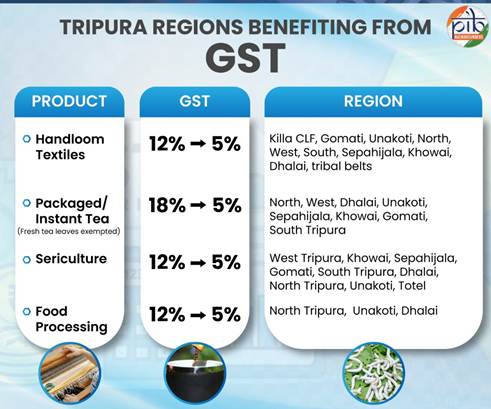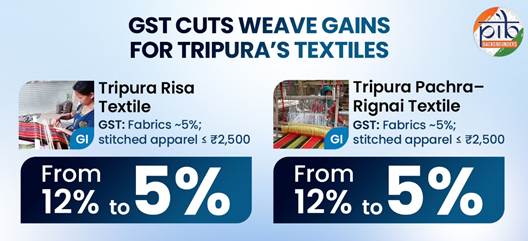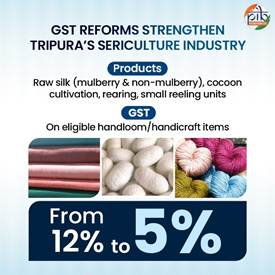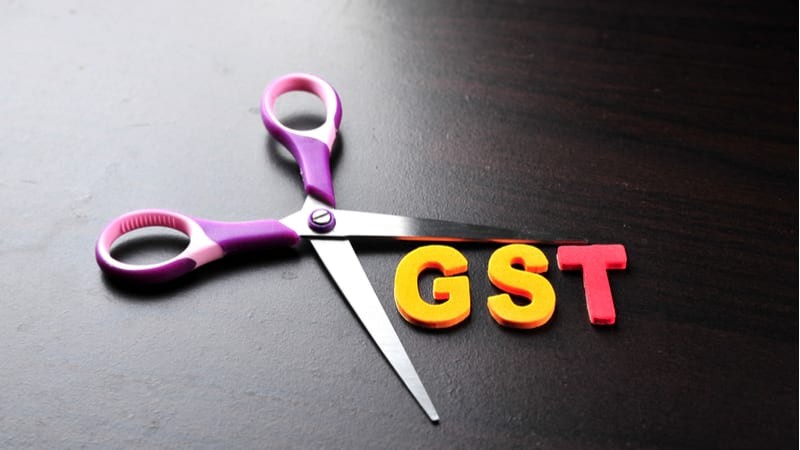TRIPURA NORTHEAST INDIA FOREST COVER AGRICULTURE HORTICULTURAL CROPS PINEAPPLE JACKFRUIT TEA PRODUCTION SERICULTURE HANDLOOMS HANDICRAFTS CULTURAL HERITAGE TRIBAL COMMUNITIES RISA TEXTILE PACHRA–RIGNAI TEXTILE GI TAG TRIPURA RURAL LIVELI
NEW DELHI, INDIA
October 23, 2025 | 198 7 minutes read
Located in northeast India, Tripura is known for its scenic landscapes, vibrant culture, and rich heritage. Tripura is endowed with ecological wealth: ~60% of its area is under forest cover, while ~24% is cultivated land. Often called the “Daughter of Mother Nature”, Tripura’s economy continues to rely heavily on agriculture and allied activities. Its agro-ecological conditions are ideally suited for diverse horticultural crops such as pineapple, jackfruit, and other tropical fruits. The state is also a notable producer of tea and has strong potential in sericulture, owing to its favorable climate and traditional silk-rearing practices. Additionally, craftsmanship in Tripura's handlooms, handicrafts and traditional arts is eminent.
Notably, these sectors are witnessing new opportunities with lower GST rates revitalizing growth and competitiveness. Reduced tax slabs for handloom textiles, stitched apparel, few forms of tea, and sericulture products support local artisans, weavers, and farmers expand market reach while ensuring affordability for consumers. By easing tax burdens and promoting local value addition, the GST reforms are strengthening Tripura’s rural economy, supporting employment, and reinforcing its position as a key contributor to India’s northeast development story.

Handloom Textiles
Handloom textiles is a well-recognized industry in Tripura. The traditional “Risa” and Tripura Pachra–Rignai have earned the significant Geographical Indication (GI) tag status. Notably, Tripura has more than 1.3 lakh households involved in handloom work.
Tripura Risa Textile
The Tripura Risa Textile, a GI-tagged product, is rooted in the traditions of the Tripuri tribal communities. Its weaving is widely practiced across tribal belts, particularly led by the Killa Mahila Cluster Level Federation (CLF) in the Gomati district. Tribal women-led and household-based, the craft relies on loin or backstrap looms.
The Risa itself holds cultural significance- it is a customary handwoven cloth used as a headgear, stole, or upper garment for women, and is also offered as a token of respect and honor to distinguished guests in Tripura. Supported and promoted by the Tripura Rural Livelihood Mission, Risa textiles primarily cater to domestic markets, symbolizing both identity and livelihood for the state’s tribal women.
Recent GST revisions further boost this traditional craft, with fabrics now taxed at around 5%, and stitched apparel priced up to ₹2,500 moved to the 5% slab from the earlier 12%. This 7-percentage-point reduction (12%→5%) for stitched Risa-based apparel (₹1,001–₹2,500 range) helps make Tripura’s indigenous textiles more competitive and accessible, enhancing income opportunities for rural women while preserving the state’s cultural heritage.

Tripura Pachra–Rignai Textile
The Tripura Pachra–Rignai Textile (GI-tagged) is woven across the tribal belts of Gomati, Unakoti, North, West, South, Sepahijala, Khowai, and Dhalai districts. Crafted by Tripuri women on loin or backstrap looms, these textiles form an integral part of Tripura’s cultural identity. The Rignai (a skirt) and Pachra (a wrap/overskirt) are symbols of tradition and worn daily as well as during ceremonies.
The market remains largely domestic, with sales done primarily through Purbasha and the Tripura Handloom & Handicrafts Development Corporation (THHDC), and at regional craft fairs, with a growing niche presence on curated online platforms.
Recent GST rate rationalizations offer a boost to this traditional sector. Unstitched fabric lengths continue at 5% GST, while stitched apparel priced up to ₹2,500 now attracts a 5% rate, down from 12%. This 7-percentage-point cut for stitched Pachra–Rignai sets (₹1,001–₹2,500 range) significantly enhances their price competitiveness and marketability. By lowering the tax burden, the GST reform supports local artisans, encourages small-scale production, and promotes wider consumer adoption of Tripura’s authentic handwoven textiles while strengthening both rural livelihoods and cultural preservation.
Sericulture

The sericulture sector in Tripura holds significant promise, and is a vital livelihood source for many rural households. Spread across West Tripura, Khowai, Sepahijala, Gomati, South Tripura, Dhalai, North Tripura, Unakoti, and Totel districts, small farmer households are actively engaged in both mulberry and non-mulberry silk cultivation. About 15,550 farmers in the state are directly involved in sericulture. Their activities encompass every stage of the silk value chain- from cocoon cultivation, rearing and raw silk production to operating small-scale reeling units, reflecting a strong grassroots ecosystem.
The recent GST rate reduction adds further momentum to this traditional industry. The tax cut from 12% to 5%- roughly a 6.25% effective benefit on eligible handloom and handicraft items- makes silk-based products from Tripura more affordable and market-competitive. This easing of the tax burden helps small producers expand market reach, strengthen income stability, and promote sustainable growth of sericulture as a key pillar of Tripura’s rural economy.
Conclusion
Lower GST rates infuse new energy into Tripura’s traditional and agri-based sectors, making them more competitive and market-ready. The reduction from 12–18% to 5% across handloom textiles, tea, sericulture, and food processing has eased costs, boosted affordability, and widened market access. From Risa and Pachra–Rignai textiles to Tripura Queen Pineapple products and sericulture industry, these reforms empower tribal women, artisans, and small farmers, while driving value addition and exports. By lightening tax burdens and supporting local enterprise, GST is strengthening Tripura’s rural economy and reinforcing its position as a key growth hub in India’s Northeast.











